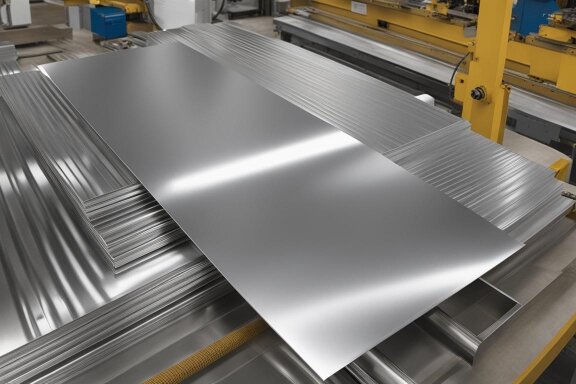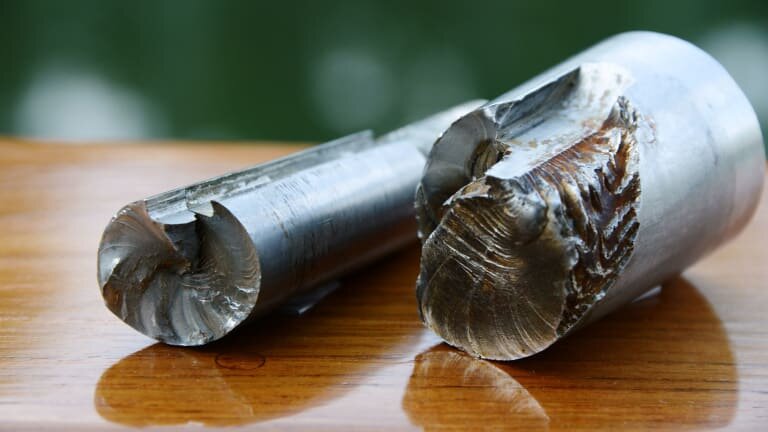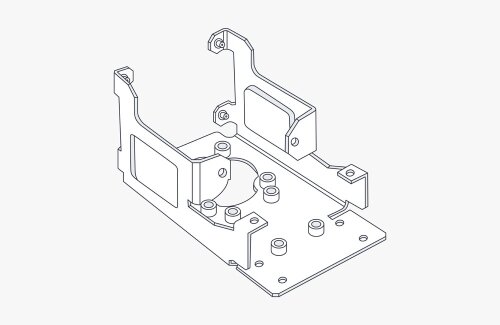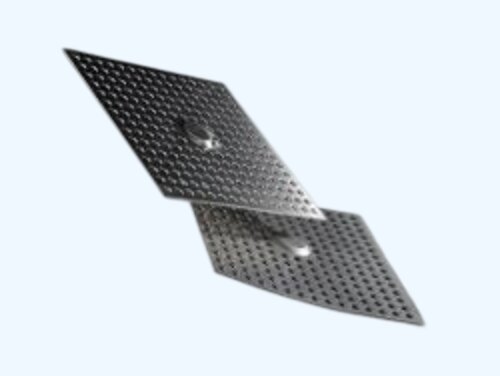يكلف تآكل المعادن الصناعات مليارات الدولارات كل عام. حيث يصدأ الفولاذ الخام بسرعة عند تعرضه للرطوبة والهواء، مما يؤدي إلى ضعف الهيكل، وإصلاحات مكلفة، ومخاطر محتملة على السلامة. يكافح العديد من المصنعين لإيجاد حل موثوق وطويل الأمد لحماية منتجاتهم المعدنية من هذا العدو الذي لا يلين.
توفر عملية الجلفنة بالغمس الساخن درعًا مثبتًا ضد التآكل من خلال طلاء الصلب أو الحديد بالزنك المنصهر. تخلق هذه العملية رابطة معدنية بين الزنك والفولاذ، مما يشكل طبقات متعددة من سبائك الزنك والحديد التي تحمي المعدن الأساسي. والنتيجة هي طلاء قوي لا يحتاج إلى صيانة يدوم لأكثر من 50 عاماً في العديد من البيئات.
هل تريد معرفة العلم وراء هذه العملية الرائعة لحماية المعادن؟ ستكشف الأقسام التالية عن كيفية عمل الجلفنة بالغمس الساخن، وتطبيقاتها في العالم الحقيقي، ولماذا قد تكون الحل الأمثل لمنتجاتك المعدنية.
كيف يحول الجلفنة بالغمس الساخن الفولاذ الخام إلى معدن محمي؟
يخلق الجلفنة بالغمس الساخن حاجزًا منيعًا ضد التآكل من خلال عملية معدنية يتم التحكم فيها بعناية. يمر الفولاذ بعدة مراحل حرجة، بدءاً من تحضير السطح وحتى غمره بالزنك، مما ينتج عنه طبقة واقية تصبح جزءاً لا يتجزأ من المعدن.
تحضير الأسطح الفولاذية
تبدأ الخطوة الأولى الحاسمة قبل أن يلمس الزنك المعدن بوقت طويل. نقوم بتنظيف الفولاذ عن طريق إزالة الشحوم وإزالة كل أثر للزيوت والشحوم والملوثات السطحية.
بعد إزالة الشحوم، ينتقل الفولاذ إلى التنظيف الحمضي. تعمل هذه الخطوة على إزالة الصدأ وقشور المطاحن تاركةً سطحًا نقيًا. ثم يخضع المعدن بعد ذلك للتدفق، مما يمنع تكوّن الأكسيد ويضمن ترابط الزنك بشكل صحيح.
الغمر وتشكيل الطلاء
نقوم بغمر الفولاذ النظيف في الزنك المنصهر المسخّن إلى حوالي 850 درجة فهرنهايت (450 درجة مئوية). عندما يتفاعل الزنك والحديد، تتكون سبيكة متعددة الطبقات من الزنك والحديد.
أثناء الغمر، لا يستقر طلاء الزنك فوق الفولاذ فقط؛ بل يتراكم فوقه. يتراكم سمك الطلاء بشكل طبيعي ويكون أكثر سمكًا في المناطق التي تحتاج إلى مزيد من الحماية.
التبريد والفحص
عندما يخرج المعدن من حمام الزنك، نقوم بتبريده إما في الماء أو الهواء. تخضع كل قطعة لفحوصات جودة شاملة، حيث يتم قياس سُمك الطلاء والتحقق من وجود أي عيوب.
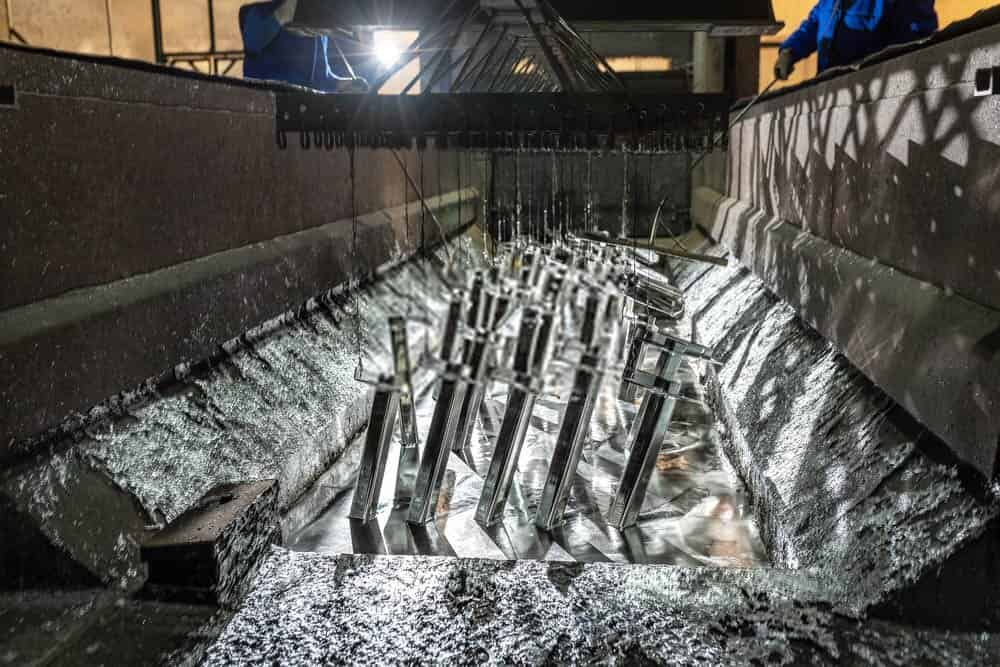
فوائد الجلفنة بالغمس الساخن
دعنا نستكشف كيف توفر طريقة الحماية القوية هذه الوقت والمال والصداع على المدى الطويل.
المقاومة للتآكل
يحمي طلاء الزنك الصلب بطريقتين. أولاً، يعمل كحاجز بين الفولاذ والبيئة. وثانيًا، يضحي الزنك بنفسه لحماية الفولاذ الأساسي - وهذا يعني أن الزنك يتآكل أولاً، مما يحمي المعدن الأساسي.
طول العمر والمتانة
تتفوق متانة الطلاء المجلفن بالغمس الساخن على معظم البدائل. تدوم هذه الطلاءات أكثر من 50 عامًا في معظم البيئات دون الحاجة إلى صيانة، وتوفر عقودًا من الحماية حتى في الظروف القاسية.
الفعالية من حيث التكلفة
قد تبدو التكلفة الأولية للجلفنة بالغمس الساخن أعلى من الطلاء. ومع ذلك، فإن عدم وجود متطلبات صيانة والعمر التشغيلي الطويل يجعلها أكثر توفيرًا بمرور الوقت. عدم الحاجة إلى إعادة الطلاء أو اللمسات النهائية يعني توفيرًا كبيرًا في العمالة والمواد.
اعتبارات بيئية
الزنك 100% قابل لإعادة التدوير دون فقدان الخصائص. تنتج هذه العملية الحد الأدنى من النفايات وتستخدم موارد أقل من دورات الطلاء العادية للصيانة.
تطبيقات الجلفنة بالغمس الساخن
صناعة البناء والتشييد
تستخدم صناعة التشييد والبناء الجلفنة بالغمس الساخن يوميًا. وتعتمد العوارض الفولاذية والأعمدة الداعمة والسلالم المعدنية على طلاء الزنك لتظل قوية. تستخدم ناطحات السحاب الحديثة العناصر الهيكلية المجلفنة التي لا تحتاج إلى طلاء أو إصلاحات.
تأتي قضبان التسليح داخل الجسور الخرسانية الآن مجلفنة مسبقاً. هذه الخطوة الذكية تمنع التآكل الداخلي وتطيل من عمر الجسور بما يتجاوز عمر حديد التسليح الفولاذي التقليدي. كما تستفيد حواجز الحماية على الطرق السريعة وأعمدة الإنارة ودعامات اللافتات من الحماية المجلفنة.
صناعة السيارات
يثق صانعو السيارات في الفولاذ المجلفن للأجزاء المهمة. يحافظ طلاء الزنك، من مكونات الشاسيه إلى ألواح الهيكل، على السيارات خالية من الصدأ خلال سنوات من التعرض للطقس وملح الطرقات.
مشاريع البنية التحتية
تتطلب مشاريع البنية التحتية الفولاذ المجلفن. تحتاج قضبان السكك الحديدية ومنصات المحطات وقناطر الإشارات إلى حماية مستمرة من الطقس القاسي. وبفضل درع الزنك الواقي، تظل كابلات الجسور وهياكل الدعم وفواصل التمدد قوية.
المعدات الزراعية
يعتمد المزارعون على المعدات المجلفنة كل يوم. فصناديق تخزين الحبوب وأعمدة السياج وحظائر الحيوانات تواجه ظروفًا صعبة، كما أن الآلات الزراعية وأنظمة الري وإطارات الصوب الزراعية تدوم لفترة أطول عندما تكون مجلفنة.

مقارنة الجلفنة بالغمس الساخن مع طرق الطلاء الأخرى
يمكن لطرق حماية المعادن أن تنجح مشروعك أو تفسد نجاحه. إليك مقارنة مفصلة لطرق حماية المعادن الأساسية:
الجلفنة بالغمس الساخن
- سُمك الطلاء: طبقة سميكة ثابتة (2-3.9 مل/50-100 ميكرون)
- نوع السند: ينشئ رابطة معدنية؛ حيث يندمج الزنك مع الفولاذ
- طريقة الحماية: الحماية الثلاثية - الحاجز والكاثودي والشفاء الذاتي
- متانة: أكثر من 50 عامًا في البيئات العادية، وأكثر من 25 عامًا في المناطق الساحلية
- طلب: عملية غمس واحدة وجودة متسقة
- تحضير: تضمن لك عملية التنظيف الآلي سطحًا مثاليًا
- ملف تعريف التكلفة: تكلفة أولية أعلى، وتكاليف صيانة شبه معدومة
- محددات: خيارات الألوان محدودة، والحجم مقيد بحمام الجلفنة
الجلفنة الكهربائية
- سُمك الطلاء: طبقة نحيفة (0.2-0.5 مل/ 5-13 ميكرون)
- نوع السند: الرابطة الكهروكيميائية على مستوى السطح
- طريقة الحماية: حماية الحاجز بشكل أساسي
- متانة: 5-15 سنة حسب البيئة
- طلب: عملية كهروكيميائية، تحكم دقيق
- تحضير: يتطلب تنظيفاً شاملاً
- ملف تعريف التكلفة: تكلفة أولية معتدلة؛ تحتاج إلى صيانة منتظمة
- محددات: غير مناسب للبيئات الخارجية القاسية
أنظمة الطلاء
- سُمك الطلاء: متغير (2-6 مل/50-150 ميكرون)
- نوع السند: التصاق السطح الميكانيكي
- طريقة الحماية: حماية الحاجز فقط
- متانة: 3-5 سنوات قبل الحاجة إلى إعادة الطلاء
- طلب: مطلوب طبقات متعددة من الطلاءات
- تحضير: إعداد السطح الحرجة اللازمة
- ملف تعريف التكلفة: تكلفة أولية منخفضة وتكاليف صيانة عالية
- محددات: يتلف بسهولة، ويتطلب إجراء عمليات تجميل منتظمة
مسحوق الطلاء
- سُمك الطلاء: نطاق متوسط (1.5-6 مللي متر/38-150 ميكرون)
- نوع السند: رابطة السطح المنصهر بالحرارة
- طريقة الحماية: حماية معززة للحواجز
- متانة: 15-20 سنة مع الصيانة المناسبة
- طلب: طبقة واحدة، معالجة بالحرارة
- تحضير: يجب أن يكون السطح نقيًا
- ملف تعريف التكلفة: تكلفة أولية متوسطة، صيانة معتدلة
- محددات: حساس لدرجة الحرارة، يتطلب وصول الكهرباء
ما التحديات التي قد تواجهك مع الجلفنة بالغمس الساخن؟
حتى أفضل طرق حماية المعادن لها حدودها. وغالباً ما يكتشف مديرو المشاريع هذه التحديات في منتصف المشروع، مما يؤدي إلى تأخيرات وتكاليف غير متوقعة. التخطيط المدروس يعني معرفة كل من نقاط القوة والضعف قبل البدء.
فيما يلي نظرة صريحة على التحديات التي قد تواجهك في الجلفنة بالغمس الساخن:
عيوب السطح:
- يمكن أن تحدث بقع عارية حول ملحومة المناطق أو الحواف الحادة
- خشونة السطح تختلف بناءً على تركيبة الفولاذ
- قد تظهر شوائب الرماد والخبث في الطلاء
- تتشكل مسامير الصرف حيث يتدفق الزنك أثناء الرفع
مشكلات التحكم في السماكة:
- قد يكون للأسطح المختلفة على نفس الجزء سماكة متفاوتة
- تراكمات الزوايا والحواف شائعة
- قد تحتوي الزوايا الداخلية على طلاءات أرق
- تؤثر درجة حرارة الفولاذ على التصاق الزنك وسماكته
الحدود البيئية والتقنية:
- حجم الحمام يحد من أبعاد الجزء القصوى
- مخاطر التقصف الهيدروجين مع الفولاذ عالي القوة
- التشويه ممكن مع الأشكال الرفيعة أو المعقدة
- فتحات التهوية اللازمة للمقاطع المجوفة
- درجات الحرارة القصوى تؤثر على عملية الجلفنة
استراتيجيات الحلول:
- التخطيط المسبق مع الجلفنة يمنع معظم المشكلات
- اختيار الفولاذ المناسب يقلل من مشاكل الطلاء
- يمكن أن تؤدي تعديلات التصميم إلى القضاء على العديد من التحديات
- مراقبة الجودة تكتشف العيوب مبكرًا
- يحافظ تحليل الحمام المنتظم على جودة الطلاء
خاتمة
يوفر الجلفنة بالغمس الساخن حماية موثوقة ومثبتة للهياكل المعدنية. وتجمع هذه العملية بين البساطة والأداء المتميز، وتوفر تقنيات الجلفنة الحديثة نتائج متسقة في مختلف التطبيقات.
بالإضافة إلى الجلفنة بالغمس الساخن، نقدم حلول تصنيع شاملة مخصصة لجميع احتياجاتك. بفضل المعدات المتطورة والفريق الفني المحترف، يمكننا تلبية متطلباتك المتنوعة في التصنيع باستخدام الحاسب الآلي, تصنيع الصفائح المعدنيةوأكثر من ذلك. اخترنا لجعل عملية التصنيع الخاصة بك أكثر كفاءة وسلاسة.
الأسئلة الشائعة
ما هو العمر الافتراضي للطلاء المجلفن بالغمس الساخن؟
يعتمد العمر الافتراضي للطلاء المجلفن بشكل كبير على البيئة. فالمناطق الريفية تشهد حماية تدوم لأكثر من 50 عاماً. تحصل المناطق الساحلية على 15-20 سنة من الأداء القوي. وتتمتع المناطق الصناعية عادةً بعمر يتراوح بين 20 و25 عاماً قبل أن تحتاج إلى عناية.
كيف يؤثر الجلفنة بالغمس الساخن على اللحام؟
يتطلب لحام الفولاذ المجلفن أساليب محددة. ينتج عن طلاء الزنك أبخرة تحتاج إلى تهوية مناسبة. سرعات اللحام أبطأ قليلاً من الفولاذ العاري. تساعد الأقطاب الكهربائية الخاصة على ضمان التوصيلات القوية.
هل يمكن تطبيق الجلفنة بالغمس الساخن على معادن مختلفة؟
يُظهر الفولاذ الكربوني نتائج ممتازة ويظل الخيار الأكثر شيوعًا. يعمل الحديد الزهر أيضًا بشكل جيد في هذه العملية. ومع ذلك، يحتاج الألومنيوم إلى طرق حماية مختلفة. يتطلب بعض أنواع الفولاذ عالي القوة معالجة خاصة لمنع حدوث مشاكل.
ما هي الصيانة المطلوبة للمنتجات المجلفنة؟
الصيانة بسيطة بشكل ملحوظ مع الفولاذ المجلفن. يعالج الطلاء الخدوش الطفيفة بشكل طبيعي. يتوفر العديد من خيارات إصلاح الأضرار الناتجة عن الصدمات. لا تحتاج معظم الهياكل إلى صيانة دورية بخلاف التنظيف الأساسي.
مهلا، أنا كيفن لي

على مدى السنوات العشر الماضية، كنت منغمسًا في أشكال مختلفة من تصنيع الصفائح المعدنية، وشاركت رؤى رائعة هنا من تجاربي عبر ورش العمل المتنوعة.
ابقى على تواصل

كيفن لي
لدي أكثر من عشر سنوات من الخبرة المهنية في تصنيع الصفائح المعدنية، وتخصصت في القطع بالليزر، والثني، واللحام، وتقنيات معالجة الأسطح. كمدير فني في شنغن، أنا ملتزم بحل تحديات التصنيع المعقدة ودفع الابتكار والجودة في كل مشروع.

